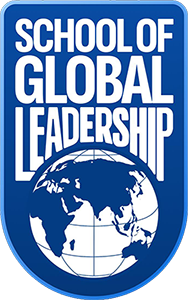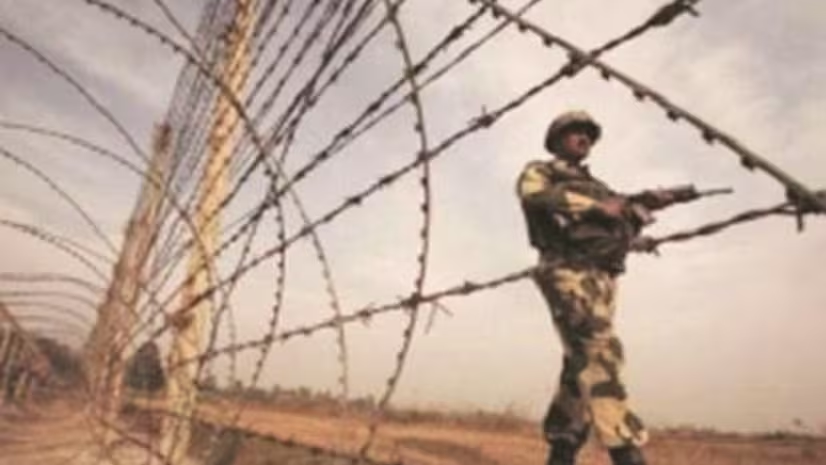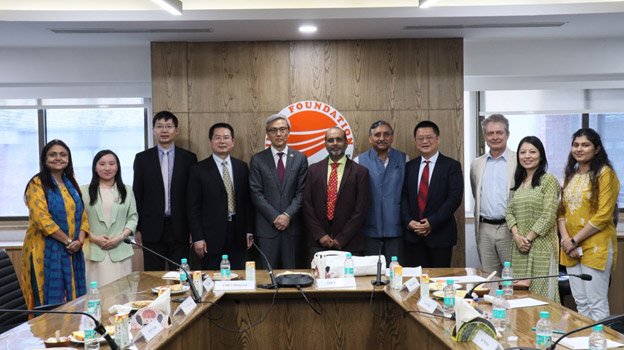In Bharat’s foreign policy, diplomacy and the military have become Siamese twins. The new mantra is 2+2 meetings between the External Affairs and Defence Ministers and their foreign counterparts.
Why does every nation, big and small, want to befriend Bharat? I have a simple answer. In international affairs, particularly when there are divergences of opinion, we are the swing state. World leaders are comfortable with us; they trust us. So in March 2024, India’s Prime Minister spoke to the Russian President and also to the latter’s implacable foe—the President of Ukraine.
Bharat has not taken sides or abused one or the other side. So, everyone expects us to find a solution. No one trusts China’s mediation, and the peace plan it came out with two years ago is dead.
The Ukrainian Foreign Minister, who had commented acerbically that India was buying Russian oil mixed with Ukrainian blood, came to India in end-March 2024, but unable to overcome his sense of racial superiority (like the Nazis, western Ukrainians claim Aryan decent), tried to give us ‘gyan’, that India’s relations with Russia are based on the Soviet legacy, which was close to extinction, so India should dump Russia and turn instead to Ukraine.
The new India scoffed at him. When I first entered South Block in July 1973, I could sense the silos within the same ministry. A few decades later, we moved to an all-of-government approach. In the last ten years, I have seen an all-people approach.
Foreign policy is no longer under a bushel; the average citizen is interested and tries to understand it, especially after the ‘janbhagidari’ of the G-20 Summit in New Delhi in September 2023, with sessions in over 250 cities. Its successful organisation immeasurably boosted our self-confidence, and foreign affairs became every Bharatiya’s concern.
A country’s foreign policy reflects its domestic capacity. I was a student at the National Defence College in 1991, when the Soviet Union imploded. There were many predictions in the mainstream media (since social media did not exist) by self-styled experts that with the demise of India’s best friend, New Delhi would face insurmountable challenges. Such analysts have always been in denial of India’s resilience and mastery over ‘jugaad’. Liberalisation of the economy came, and India grew from strength to strength. Our nuclear tests of the late 1990s shook the world, but since we were now a declared nuclear power (a foreign policy masterstroke), no one wanted to seriously offend us (except a few minor western nations stuck in a time warp) who hectored us and imposed meaningless sanctions. The smaller ones screamed the loudest, even though the budget of a mid-sized Indian municipality was more than their GDP!
Pakistan attacked us in 1999, scampered away with our boot imprint on its rear, and the world took note of our military strength. In 2000, our young IT experts successfully obliterated the Y2K bug in computer systems across several countries. Information technology multinationals rushed to Bengaluru, and those who lost their jobs in their home countries talked of being “Bangalored.”
Tired of the shenanigans of the Masters of the Universe, in 2003 we decided to decline all foreign aid—our self-confidence skyrocketed. In particular, the atavistic British, unable to forget that aeons earlier they had been a great power, felt cheated of their destiny to be a perennial aid donor. There were furious debates in the ensuing years in the House of Commons and the House of Lords, but did we collapse?
Quite to the contrary, India’s all-round prowess was quickly on display. The Quadrilateral Security Dialogue, or QUAD, arose from the 2004 tsunami, in which we were the first responders, along with three other nations involved in rescue operations: the USA, Japan, and Australia. In clear view was Bharat’s ability to put together an impressive fleet within days and assist its maritime neighbours like Sri Lanka, the Maldives, Bangladesh, and Indonesia—32 ships and 5,500 naval personnel, even as it carried out magnificent relief efforts in Tamil Nadu and the Andaman and Nicobar Islands.
“It will be a key pillar of stability in the Indo-Pacific region,”[1] Prime Minister Narendra Modi said at the first-ever Quad Summit. Make no mistake about it: Quad will grow faster now and willy-nilly will become the core of the Free and Open Indo-Pacific (FOIP) vision, with a “tough security-oriented core and a softer and inclusive exoskeleton that prioritises the developmental agenda.”[2] As our reputation as an effective international player soared, so did our economy. Robert Merton’s Law of Unintended Consequences had kicked in. By 2007, we were a one trillion dollar economy!
Our technological prowess excited admiration and envy in equal measure. In 2017, we deployed 104 satellites in sun-synchronous orbits in a single mission, an unbroken world record. If the economy and popular will are strong, a country’s international relations reflect that. As a Special Advisor in some African nations, I see that their self-confidence and self-esteem are abysmal, so their renaissance falters. Unable to deny Bharat’s amazing progress, some western NGOs and so-called think-tanks (they tank because they cannot think) derive ghoulish delight from running Bharat down on all manner of “indices”—freedom, democracy, happiness, media, output, etc. At least it gives us a good reason to laugh.
We have reached our present level of development as the fourth-largest economy in the world and as a vibrant democracy with all its warts and weaknesses. We do not impose our views on our partners but ask them to define their priorities that we try to respond to. Nor do we keep supervising projects that we fund in other countries; we give them space and respect their competence. We do not pontificate on good governance. Our soft loans are among the most generous in the world, with a very large grant element. Our human resource development partnership is most sought-after, with thousands of scholarships every year.
Bharat’s medical facilities are the best in the world, and when I travelled back to Bharat recently from New York, the American cabin crew told me how they come to Bharat regularly for dental treatment that is much better and far cheaper than anywhere else. When the present regime took over 10 years ago, many of the same naysayers predicted that foreign affairs would be Narendra Modi’s weakest link, given his lack of expertise. How wrong they were! He hired the best in the trade, turned the system of non-alignment on its head, dumped the cliches in our foreign policy establishment, and made new friends across the globe. Since we could not give away Kashmir, he decided to wean away Pakistan’s supporters. And how!
Today, Pakistan is totally isolated, even in the Islamic world. Its economy is in a coma, kept alive in the Critical Care Unit of the International Monetary Fund with some oxygen from China and a couple of others. Arab nations have vied with each other to give Bharat’s Prime Minister their highest national honours. Soon after the visit of its Sultan to Delhi, Oman allotted a specific zone to Bharat in the strategically located Port of Duqm, which overlooks the Gulf of Oman, the Arabian Sea, and the Indian Ocean, a development that will enhance Bharat’s role in the western and southern Indian Ocean region.
Bharat’s assertion of its strategic autonomy has been anathema to some external powers, but that has not deterred New Delhi. It was clearly visible in the curt response given by the MEA to comments made by Germany, the United States, and the United Nations on the arrest of Delhi’s Chief Minister. New Delhi promptly and publicly ticked them off for commenting on Bharat’s transparent and democratic judicial system. The Indian media too went to town, pointing out that we had not commented on the apparent witch hunt against a former US President, and wondering why this Chief Minister’s arrest had so rankled the West. In another earlier incident, wherein the Prime Minister of Canada, Mr. Justin Trudeau, accused Bharat of complicity in killing one of its citizens on June 18, 2023, New Delhi simply called the accusation “absurd”[3] and asked Canada to remove 41 of its 62 diplomats from its overstaffed mission in the country.[4] Here too, the people of Bharat, masters of social media, were more aggressive in their response, which once again is an expression of a New Rising Bharat. It was the same Mr. Trudeau who made unwarranted comments about Canada being “there to defend the rights of peaceful protest” when farmers in India were protesting in 2020. This too was responded to firmly by the Government of India. Now, in 2024, he has not uttered a word in support of protesting Indian farmers. Things certainly have changed in the last decade!
In January 2024, three ministers from the Maldives made derogatory comments on Bharat’s prime minister, after he tweeted a photo of himself at a beach in Lakshadweep and asked Bharatiyas to go and see it. The swift and angry response from Bharatiyas resulted in the cancellation of holiday trips to the Maldives by many Indians, prompting local tour operators to beg for forgiveness. Faced with unsustainable debt, the new prophet of Islam, the President of the Maldives, now begs Bharat to reschedule the payments due to it.
Bharat’s articulation on the world stage, including the “one-liners” by its foreign policy leadership and its firm actions in the face of major international challenges, not only brought laurels to it but forced the world to sit up and take note. In 1947, our bodies became free. In 1971, our strength was liberated. In 2022, Netaji Subhas Chandra Bose took his rightful place in our pantheon of heroes, and our minds were unshackled. In 2023, Chandrayan liberated our self-confidence, and in January 2024, when “Ram Lalla’ came home, our souls were liberated.
Our pride soared when we got our own state-of-the-art Parliament building and rediscovered the ‘Sengol’, derived from the Tamil word “Semmai” for “righteousness” and associated with the Chola Empire. This Empire was one of the longest-ruling and most influential dynasties in South Bharat, and was known for its military prowess, maritime trade, administrative efficiency, cultural patronage, and temple architecture.
Swami Vivekananda said: “I see that each nation, like each individual, has one theme in this life, which is its centre, the principal note around which every other note comes to form harmony.”[5] As we look into our past with pride, there is, on every side, a fresh manifestation of life. It is out of this past that the future is being moulded. Proactive diplomacy, together with strong ground positions, is Bharat’s new mantra, which its bullying northern neighbour now understands at a cost.
Numbness and pussyfooting dominated Bharat’s foreign policy for decades after independence. We always punched much below our weight. There were some sporadic exceptions in the neighbourhood, like Prime Minister Indira Gandhi’s actions during the 1971 Bangladesh War or our intervention in the Maldives in 1988 to prevent a coup. But Bharat was seen as a pushover by all and sundry in the world till we resolutely stood up to international pressures with our 1998 nuclear tests.
Gone are the days when our leaders delivered marathon speeches at the UN. “I can say in six minutes what V. K. Krishna Menon took hours to do at the UN. We should stop giving ‘gyan’ to the world and worry about our national interests,”[6] Bharat’s outstanding External Affairs Minister told Parliament in August 2022.
In May 2023, in Port Moresby, Papua New Guinea Prime Minister James Marape bent down to touch the feet of PM Narendra Modi, who was there to host the third summit of the Forum for Bharat-Pacific Islands Cooperation. The respected public affairs company, Morning Consult, has consistently ranked Narendra Modi first among 22 world leaders with a huge approval rating, well ahead of the second-placed leader. According to a report by American investment banker Morgan Stanley in May 2023, “in just a decade, Bharat has gained positions in the world order with significant positive consequences for the macro and market outlook.”[7] The report lists 10 big changes (including supply-side policy reforms, formalisation of the economy, digitalising social transfers, a focus on FDI, and government support for corporate profits) that have propelled MNC sentiment to a multi-year high. The New York Times, which for the most part writes rabidly anti-Bharat articles, has acknowledged the explosive growth of Bharat’s space tech startups (over 140 and fast growing) and says Bharat is set to “transform the planet’s connection to the final frontier.”
US-based semiconductor company Micron Technology said it was surprised by how quickly Bharat implemented its side of the deal, and it had to move very fast for Bharat’s first chip facility in Gujarat, which will create 5,000 direct and 15,000 indirect jobs in the coming years. Apple says it is easier to do business in Bharat than in China. Taiwanese giant Foxconn signed a deal with Tamil Nadu to invest almost USD 200 million in a new electronic component manufacturing facility that will create 6,000 jobs.
The CEO of McKinsey & Co. says it is not just Bharat’s decade, but Bharat’s century. He is spot-on. In foreign policy, we have the duck syndrome. Everything seems placid on the surface, but below, the feet are paddling furiously. That is how we brought our sentenced-to-death naval heroes home from Qatar.
Since the present Prime Minister came to power, I have seen success after success in our foreign relations. Our diplomacy in modern Bharat is cost-effective and result-oriented. We discuss, negotiate, and respond with facts and figures. Narendra Modi’s incessant visits and “hugplomacy” are how legends are born. In 2021-2022, we gave free vaccines to dozens of poor countries, while the West hoarded its stocks to sell them for a profit. The global appreciation for India’s gesture was amazing.
Our relief for Nepal, devastated by a huge earthquake in 2015, arrived within 8 hours (the rich nations were expressing condolences), and the Nepalese Prime Minister said his country was blessed to have a neighbour like India. A year earlier, we had quenched the thirst of Maldivians with desalination plants on two Bharati ships. We pulled Sri Lanka out of the Chinese pit into which it had fallen. We are ensuring safety in the Red Sea and rescuing sailors from around the world. When her children were insecure in Lebanon, Syria, Ukraine, Sudan, Libya, or Israel, Bharat Ma reached out to bring them home. One Arab Minister told me that with America having run away from the region, Russia being occupied elsewhere, Europe in distress, and China totally unreliable, their best hope for a “security provider” (and I quote verbatim) is a “superpower called Bharat!”
When earthquakes hit Syria and Turkiye, we were the first responders. When food-stressed nations needed cereals, we were the first to help. Bharat joined the Missile Technology Control Regime in 2016, as blatant proliferator China is not a member and could not block Bharat’s entry. Unable to stomach a rising Bharat, China tries its best to hurt us, even as its own economy tanks, foreign investment declines dramatically, and its international reputation is in tatters. It has consistently blocked our membership in the Nuclear Suppliers’ Group, a 48-member body that requires consensus to admit new members. Bharat formally applied for membership in 2016.
China, stung by our solid rejection of its dying Belt and Road Initiative that it wanted Bharat to join, is now exhibiting a hellish fury, like a woman scorned. The 2020 Galwan conflict and the 2022 Tawang episode reflect that rage. China will never accept Bharat’s rise since it fancies itself as the next master of the universe. In a few decades, will its 9-dash line become a 99-dash line to include the entire galaxy and Milky Way?
I am not being facetious. Take the case of ASEAN. China once considered ASEAN its sidekick, and ASEAN was too timid to assert itself. In July 2010, at the ASEAN Regional Forum (ARF) meeting in Hanoi, the Chinese Foreign Minister, fuming at the temerity of 10 countries that had raised the contentious South China Sea dispute, stared at his Singaporean counterpart and thundered, “China is a big country, and other countries are small countries, and that is just a fact.”[8]
Some years ago, an ASEAN leader called the association an aircraft, with China and Bharat as the wings. But as the China wing is destabilising, the Bharat-ASEAN dynamic has added a military dimension. We have been participating in joint drills in the region at least since 2019.
China has claims to the territories and waters of almost all ASEAN members. Just a few days before the G-20 Summit in New Delhi and the ASEAN Summit in Jakarta, China published a new standard map of China showing large parts of Bharat, Vietnam, Malaysia, the Philippines, Brunei, Indonesia, and Taiwan as Chinese territory. Led by Bharat, the affected nations lodged strong protests. To avoid facing the international media, Xi Jinping decided not to attend the summits.
In December 2023, a Bharati warship, on a goodwill visit, docked in Manila after passing through the contested South China Sea (claimed by six nations). In 2016, China contemptuously rejected a UN Tribunal’s judgement that awarded disputed islands to the Philippines. In a joint press conference in March 2024, the Foreign Minister of the Philippines said that the bilateral relationship had reached unprecedented levels, while his Indian counterpart promised to stand by Manila regarding its territorial integrity. China saw red and said third parties should not interfere in bilateral disputes, conveniently forgetting China’s role in Pakistan-occupied Jammu and Kashmir.
The Philippines has bought 100 Brahmos missiles from India in 2022 against a soft loan; delivery has begun. In December 2023, Bharati military officers were in Vietnam for interoperability exercises. Hanoi acquired its first Indian frigate in June 2023 and wants the Brahmos missiles. So does Indonesia, which in 1965 was keen to grab the Nicobar Islands but in 2024 is jointly developing with India the crucial Sabang Port overlooking the Malacca Straits. China’s attempt to build a so-called string of pearls around India is effectively being countered by India’s necklace of diamonds.
Bharat got the 54-member African Union into the G-20; the Western nation that chaired an earlier summit brought in the European Union. This one gesture reverberated across the developing world but hurt egos elsewhere. In January 2023, Prime Minister Narendra Modi chaired a virtual meeting of 125 developing nations and asked for their pressing concerns, which were then incorporated into the September 2023 Delhi Declaration. The brave new Bharat is recognised globally for its strategic autonomy, resolute response, and risk-taking appetite.
Bharat’s articulation on the world stage and its firm actions in the face of major international challenges have brought laurels to it and forced the world to sit up and take note. We are admired for being the leader of the Global South; we prefer to be partners in BRICS, G-20, or SCO.
In 2022, after Russia invaded Ukraine, US President Joe Biden asked us to criticise Russia; when we did not do so, he called our position “shaky,” and his officials issued their standard warning of “consequences” if we did not fall in line. We scoffed, continued with our policies, and lo and behold, America continued to maintain cordial relations with us.
Since independence, total FDI in Bharat has been close to USD 1 trillion, and half has come in the last 10 years from over 160 countries in more than 60 sectors. Narendra Modi has reminded us that power respects only power. I call him Jambavanta, who aroused Shri Hanuman’s latent power in the Ramayana.
So long as it forgot its past, Bharat remained in a state of stupor, and as soon as Bharatis have begun to look into their past, there is on every side a fresh manifestation of life. The more, therefore, that Bharat understands its past, the more glorious will be its future.
“Proactive diplomacy together with strong ground positions” is Bharat’s new mantra.
Narendra Modi has given us self-confidence, self-esteem, and self-reliance.
170 years ago, Victor Hugo said that no power on earth could stop an idea whose time has come. We have come of age. Bharat’s time has come.
Thank you, Prime Minister. Every Bharati stands six inches taller.
Author Brief Bio: Ambassador Deepak Vohra is a former diplomat and a former Ambassador of India to Poland. He has served in France, Tunisia, United States, Chad, Cameroon, Papua New Guinea, Spain, Armenia, Sudan and Poland. He is currently a special advisor in Africa.
References:
[1] https://www.livemint.com/news/india/quad-has-come-of-age-will-be-key-pillar-of-stability-in-indo-pacific-pm-modi-11615556767376.html
[2] https://sundayguardianlive.com/news/quad-making-china-quadriplegic
[3] https://www.nytimes.com/2023/09/18/world/canada/canada-india-sikh-killing.html#:~:text=The Canadian leader said agents,called the accusation “absurd.
[4] https://www.nbcnews.com/news/world/canada-removes-41-diplomats-india-rcna121343
[5] https://www.swamivivekananda.guru/2021/05/10/swami-vivekananda-the-india-personified/
[6] https://theprint.in/world/we-should-play-our-role-be-less-concerned-about-giving-gyan-to-world-over-foreign-policy-jaishankar-in-lok-sabha/905896/
[7] https://www.hindustantimes.com/india-news/this-india-is-different-from-the-one-in-2013-morgan-stanleys-transformation-report-101685527464704.html
[8] https://jamestown.org/wp-content/uploads/2010/12/cb_010_3d52c6.pdf, page 4.




















